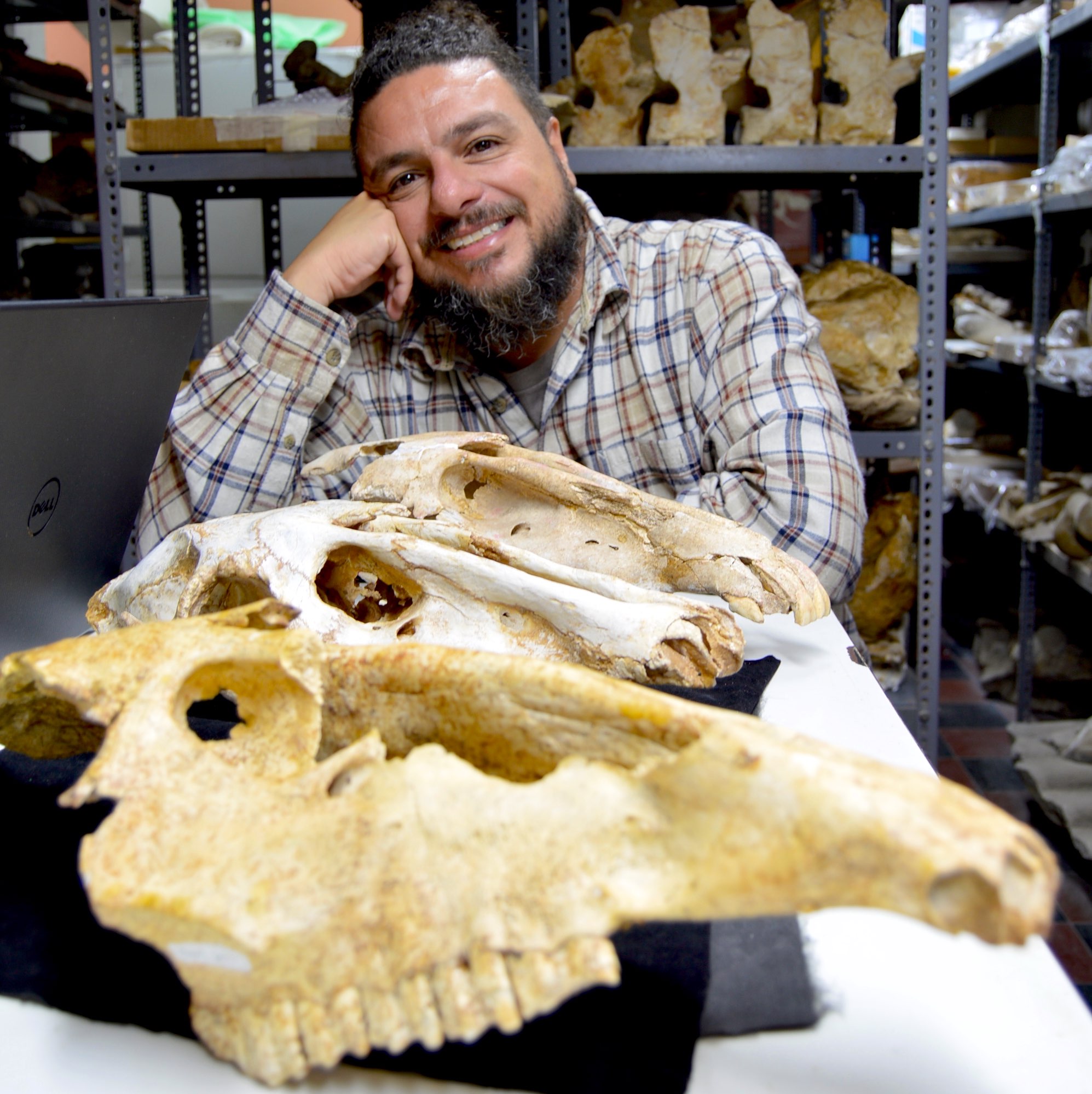时间(Time):2017.9.12(周二) 下午2:30-4:30
(2017.9.12 Tuesday 2:30-4:30 pm)
地点(Location):首建大厦9楼报告厅
(Room 937, Shou Jian Building)
嘉宾(Guest):1. Dr. Leonardo S. Avilla(Coordinator of the Mammalogy Lab at the Universidade Federal do Estado do Rio de Janeiro, Brazil, and affiliate member of the Brazilian Academy of Sciences)
Horses, zebras, asses are all members of the genus Equus and the only survivors of the Equidae. This is the most successful and diversified family among Perissodactyla and originated in the Early Eocene in North America. However, only the Equini lasted from the Quaternary on, positively selected to inhabit grasslands (big-sized, more cursorial run and consuming more abrasive food). Consequently, Equus and Hippidion were the only Equidae in the Pleistocene/early Holocene in the Americas. Those were closely related, but not sister-taxa and this suggest that the South American “invasion” of Equidae during the Great American Biotic Interchange occurred at least twice and independently — Hippidion in the early Pleistocene and Equus in the middle Pleistocene. Moreover, only one species of each roamed South America, Hippidion principale and Equus neogeus. Both had great ecological plasticity, occurring in the highest Andean plateau, Andean valleys and lowlands (coastal and interior), but there is no Equidae record for the Amazonian region so far (they were probably humid and dry openland dweelers). Interestingly, our team also recognized possible dwarfism in populations of Andean equids and other mammals, which suggests that the association of altitude and isolation could have produced an “island effect” during the Pleistocene at the “Andean Archipelago”. Finally, as fast as Equidae became successful in the New World, they got extinct – humans? Climate change? Synergy of both? Unfortunately, It is still a mystery the causes for their extinction in the Americas.

嘉宾(Guest):2. Dra. Dimila Mothé(Postdoctoral Fellow at the Mammalogy Lab, at Federal University of the State of Rio de Janeiro, Brazil)
Studies on South American proboscideans (Mammalia, Proboscidea) started around 210 years ago and our understanding of these giant mammals is still on progress. Two proboscideans are recognized to South America: Notiomastodon platensis and Cuvieronius hyodon, and they have never been recorded in the same locality. Both had a generalist-opportunist alimentary strategy, a competitive exclusion probably precluded their sympatry. Their origin is most probably related to independent migrations from Central America during the Great American Biotic Interchange. The brevirostrine bunodont proboscideans from the New World, and Sinomastodon (endemic from Asia) were recovered in a phylogenetic analysis of Elephantida as a single clade, sister-group of Elephantidae, and this clade is not considered as part of the Gomphotheriidae. The Gomphotheriidae includes proboscideans bearing very long symphysis and lower tusks, being restricted to Amebelodontinae and Gomphotheriinae. Notiomastodon platensis has a continuous record from the Early Pleistocene to Early Holocene, when it became extinct, probably due to synergy of human impact and climatic changes during the Pleistocene/Holocene transition. In contrast, extinction of Cuvieronius hyodon happened much earlier, and it was not related to the terminal Pleistocene event that lead the extinction of selected megafauna in South America.

脊椎动物演化与人类起源重点实验室&研究生会
Key Laboratory of Vertebrate Evolution and Human Origins
of Chinese Academy of Sciences & Student union
2017.9.7